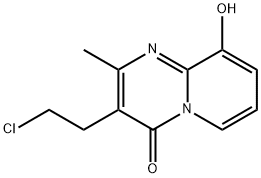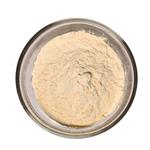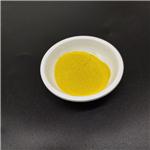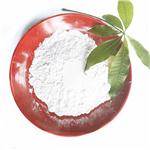Synthesis
A suspension of methanol and 3-(2-Chloroethyl)-9-hydroxy-2-methyl-4H-pyrido[1,2a]pyrimidin-4-one Hydrochloride in a reactor was heated to 50–55 ℃ to achieve dissolution. Charcoal was then added to the solution, and heating was continued. The contents were filtered, and the charcoal cake was washed with methanol. The combined filtrate, the catalyst (10% Pd/C, 50% wet), and dichloromethane were added to a hydrogenation reactor, and the mixture was hydrogenated. The hydrogen pressure was then reduced to 28–43 psi until the completion of the reaction by HPLC. Then, the catalyst was filtered off and washed with methanol. The combined filtrate was evaporated at a temperature below 50 ℃ under reduced pressure to give a dark grayish oil (crude production 3-(2-Chloroethyl)-6,7,8,9-tetrahydro-9-hydroxy-2-methyl-4H-pyrido[1,2-a]pyrimidin-4-one).
References
[1] Pavankumar V. Solanki . “Preparation of 3-(2-Chloroethyl)-6,7,8,9-tetrahydro-9-hydroxy-2-methyl-4H-pyrido[1,2-a]pyrimidin-4-one, a Key Intermediate for the Synthesis of Paliperidone.” Organic Preparations and Procedures International 48 3 (2016): Pages 296-302.
![3-(2-Chloroethyl)-6,7,8,9-tetrahydro-9-hydroxy-2-methyl-4H-pyrido[1,2-a]pyrimidin-4-one Structure](https://www.chemicalbook.com/CAS/GIF/130049-82-0.gif)




